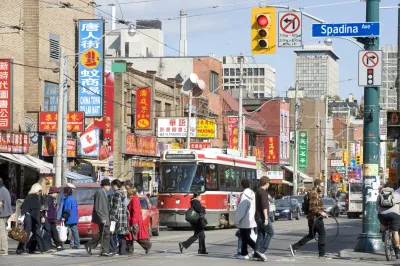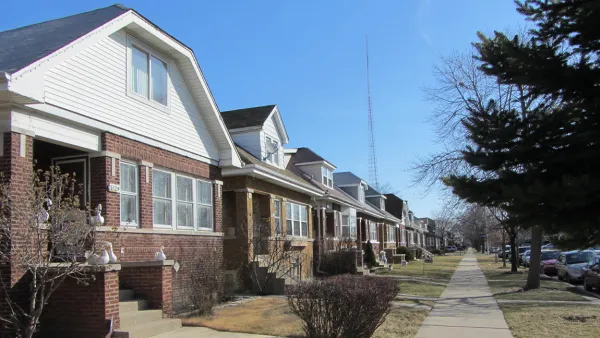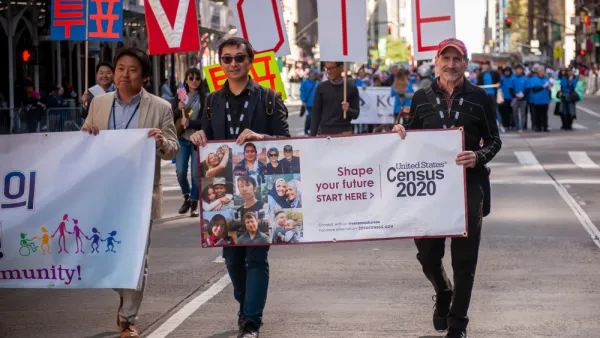A closer look at the numbers reveals stark divides among Toronto neighborhoods.

A new study of Canadian census data shows significant racial and income segregation throughout Toronto. The lowest-income neighborhoods, with average incomes less than $32,000, make up almost half of the city's census tracts, and 68 percent of residents in these neighborhoods are non-white. On the other hand, 23 percent of Toronto's census tracts include neighborhoods with average incomes of $102,000, and two-thirds of these residents are white.
These findings indicate that financial resources give people access to particular neighborhoods. But other issues might also be in play, writes Sandro Contenta:
Choice also partly explains the makeup of low-income neighbourhoods. Some members of ethnic groups prefer to live where their communities are most numerous, giving them easy access to the shops and cultural or religious services that facilitate integration or simply make life more enjoyable.
However, the study also found that half of residents in these neighborhoods have post-secondary degrees, and they say this relatively high percentage of educated residents with low incomes suggests discrimination is playing a role in the disparities. In addition, 57 percent of low-income neighborhoods are made up of immigrants as compared to 31 percent of high-income neighborhoods.
Researchers have pointed to institutional factors that have contributed to the demographic landscape of Toronto:
The polarized income trend dates back to the 1990s, caused by federal and provincial cuts in transfer payments and social assistance, along with tax cuts, rising housing costs and the disappearance of well-paid manufacturing jobs, [researcher David] Hulchanski says.
They argue that government policies are needed to reverse these segregation trends and avoid the sort of social and political conflict seen in European countries.
FULL STORY: Toronto is segregated by race and income. And the numbers are ugly

National Parks Layoffs Will Cause Communities to Lose Billions
Thousands of essential park workers were laid off this week, just before the busy spring break season.

Retro-silient?: America’s First “Eco-burb,” The Woodlands Turns 50
A master-planned community north of Houston offers lessons on green infrastructure and resilient design, but falls short of its founder’s lofty affordability and walkability goals.

Delivering for America Plan Will Downgrade Mail Service in at Least 49.5 Percent of Zip Codes
Republican and Democrat lawmakers criticize the plan for its disproportionate negative impact on rural communities.

Test News Post 1
This is a summary

Test News Headline 46
Test for the image on the front page.

Balancing Bombs and Butterflies: How the National Guard Protects a Rare Species
The National Guard at Fort Indiantown Gap uses GIS technology and land management strategies to balance military training with conservation efforts, ensuring the survival of the rare eastern regal fritillary butterfly.
Urban Design for Planners 1: Software Tools
This six-course series explores essential urban design concepts using open source software and equips planners with the tools they need to participate fully in the urban design process.
Planning for Universal Design
Learn the tools for implementing Universal Design in planning regulations.
EMC Planning Group, Inc.
Planetizen
Planetizen
Mpact (formerly Rail~Volution)
Great Falls Development Authority, Inc.
HUDs Office of Policy Development and Research
NYU Wagner Graduate School of Public Service





























